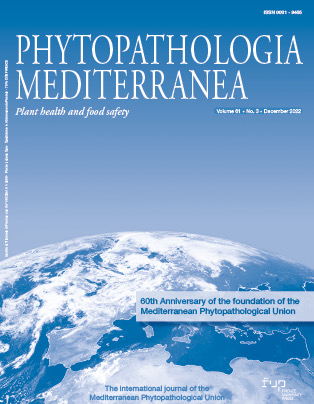Published 2023-01-13
Keywords
- Wood cankers,
- dieback,
- Botryosphaeriaceae,
- abiotic factors,
- epidemiology
How to Cite
Abstract
Production from crops of pome, stone fruit, nut, berry fruit, citrus, grapevine, and olive is increasingly threatened by fungal trunk diseases (FTD). These diseases and the consequent production losses are major problems. Many fungi (including Botryosphaeriaceae, Calosphaeriaceae, Diaporthaceae, Diatrypaceae, Nectriaceae, Phaeomoniellaceae, Pleosporaceae, Togniniaceae, Valsaceae) infect host wood, mainly through wounds and subsequent colonization of woody tissues, causing symptoms such as cankers, gummosis, wood rotting, blight and dieback. Propagative plant material, seedlings and fruit play a significant role in pathogen spread. Several abiotic factors (e.g. shifts in cultural practices and climate change) are involved in the disease development. This paper reviews recent literature on FTD of fruit crops, particularly focusing on the European status of pathogen occurrence. Case studies are described related to diseases of apple, citrus, grapevine, berry, nut and stone fruit, and olive trees. Aspects related to epidemiology and the increase in disease incidence along with the future perspectives on the FTD research are also discussed.







